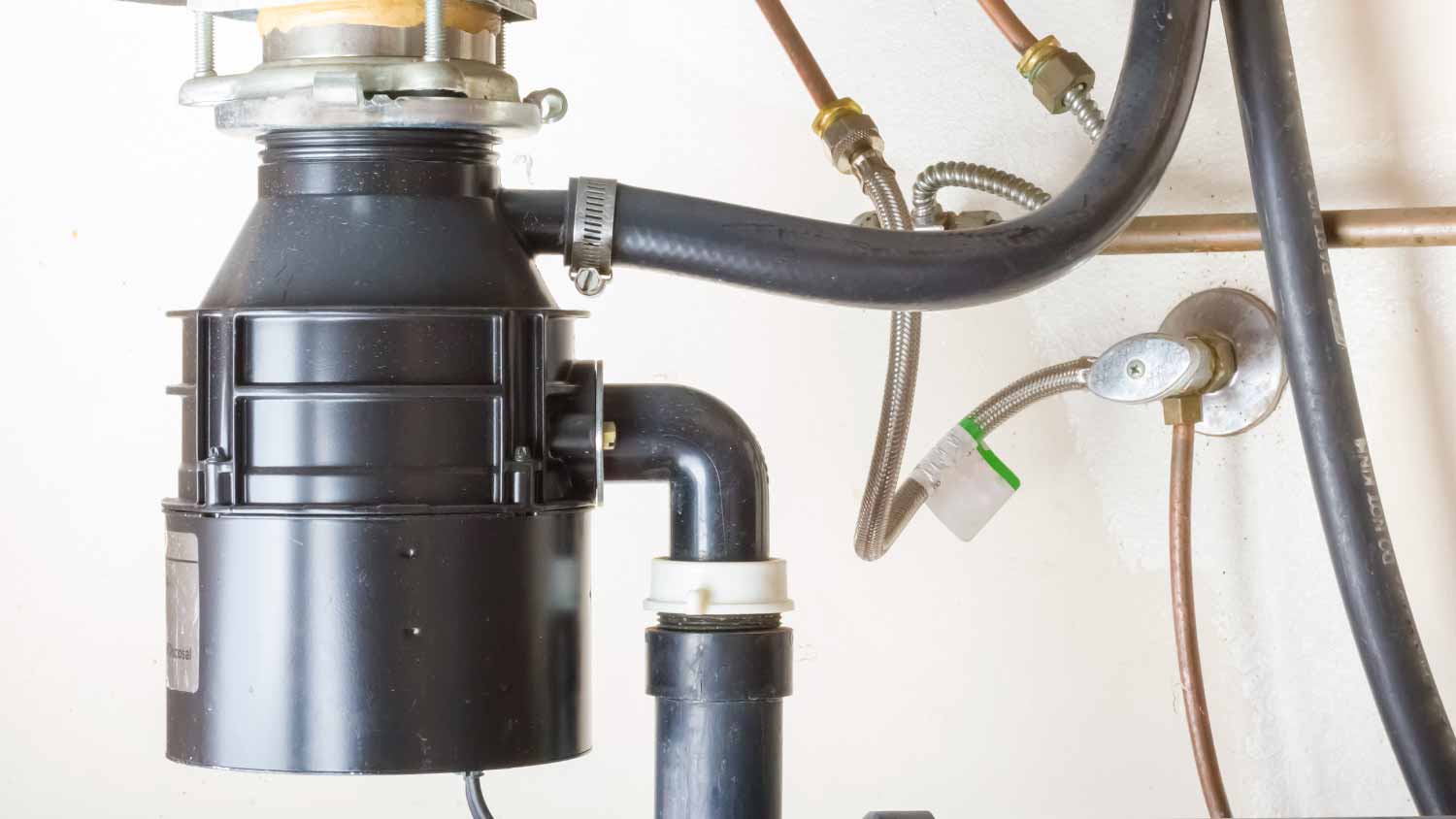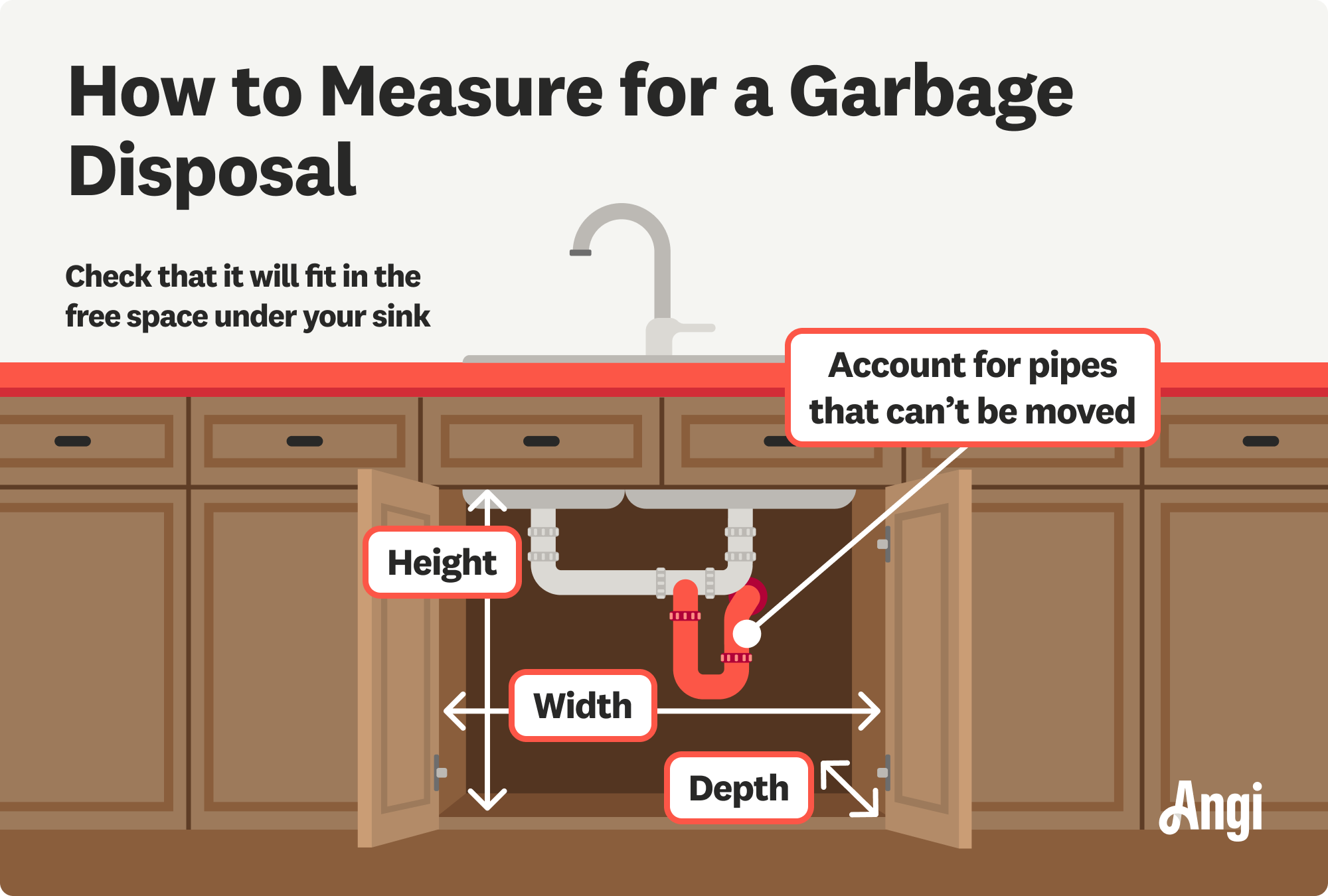
Dryer repair costs as little as $10, but sometimes, replacing your dryer is more cost-effective. But if you have to make repairs, here’s how much it’ll cost.
Our tips will help you get a perfect fit


Garbage disposals come in a range of sizes and power.
The right size for your home depends on several factors.
An underpowered garbage disposal won't be up to the job.
Your home's garbage disposal transforms food bits into a liquefied pulp that your local wastewater system can convert into biofuel. Pretty cool, right? But before you can use your food waste for good, you need to know what size garbage disposal you need. It all depends on your sink, your household, and your cooking habits.

You don't want a garbage disposal that's too weak and not up to the job of clearing away food from multiple daily meals. At the same time, you don't want to go too big and end up with a disposal that doesn't fit under the sink. When choosing the right disposal for your home, consider the following.
Your garbage disposal needs to fit into the cabinet under your sink. That means you need to know the dimensions of your sink and the cabinet. You must
Use a ruler or measuring tape to note the height, width, and depth of the sink cabinet. Then, note the location of the drain pipes, which you can't move. Your garbage disposal should fit into the free space beneath the sink.

Like car motors, the motor strength of a garbage disposal is measured in horsepower (HP). Garbage disposal ratings start at 1/3 HP and go up from there:
1/3 HP: The smallest size garbage disposal is ideal for a household with one or two people or with just a few meals prepped per week.
1/2 HP: If you live in a household of one or two and cook daily, a 1/2 HP disposal should be sufficient for your needs.
3/4 HP: Do you have kids and cook a few times a week? A 3/4 HP disposal should work for you.
1+ HP: The highest-powered garbage disposals, usually 1 or 1 1/4 HP, are perfectly suited for larger households with at least four people or those who cook every meal from scratch.
The chamber holds food waste. Food waste goes into a hopper from the sink, then into the upper chamber after the garbage disposal is switched on. It moves into the lower chamber to exit the sink system.
Typically, the higher-powered your garbage disposal, the larger the chamber size. But you should still confirm the unit will fit under your sink and to make sure it can hold an adequate amount of food.
Most drain pipes are a standard size, but if your home was custom-built, this feature may be something you need to consider.
In a typical kitchen, there are three commonly-used drain pipe sizes: 1 ¼ inches, 1 ½ inches, and 2 inches in diameter. Another common size is 3 inches, although this is seen more often in commercial settings and very large households.
If your home has a non-standard drain pipe size, this will factor into the size garbage disposal you need.
While your household size matters, you should also consider how often meals are cooked. If you mostly eat meals out, a smaller disposal should be sufficient. However, if you're living single and cooking every meal yourself, then you may be better off with a higher-powered, larger disposal.
From average costs to expert advice, get all the answers you need to get your job done.

Dryer repair costs as little as $10, but sometimes, replacing your dryer is more cost-effective. But if you have to make repairs, here’s how much it’ll cost.

Garbage disposals last five to 10 years, and replacement is preferred over repairs. Here’s everything you need to know about replacing your garbage disposal.

Discover the cost to install washer and dryer hookups. Learn about price factors, labor, materials, and tips to save on your laundry room project.

If your fridge is not cold but the freezer is, you can use these troubleshooting tips to find and address the issue, possibly without paying for repairs.

Burnt popcorn or a candle gone wrong can smell pungent and overwhelming. Find out how to get these smoky smells out of your house for good.

Using your stove can cause smoke, smells, and grease to build up in your kitchen and home. Find out how much CFM your range hood needs to kick them to the curb.